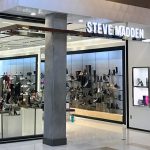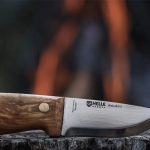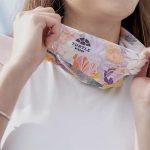A potential federal ban of imports of what Converse Inc. calls Chuck Taylor “knockoffs” narrowed considerably last week after an administrative law judge rejected the company’s assertion that it had acquired trademark rights to certain aspects of the shoes’ design merely because they had become so famous.
Charles Bullock, chief administrative law judge of the International Trade Commission (ITC) issued an initial determination that certain imports violate Section 337 of the 1930 Tariff Act in so far as they violated three registered trademarks held by Converse. However, Bullock also found no violation of Section 337 under Converse's asserted “common law trademarks,” which lessens the likelihood that the ITC will restrict imports of millions of pairs of shoes featuring the midsole, outsole and toe cap bumper elements popularized by “Chucks.”
Converse, which is a wholly owned subsidiary of Nike Inc., contends it has sold more than 1 billion pairs of Chucks since 1917, making it the most popular sneaker in the world.
The judge’s ruling triggered the usual claims of victory from all sides, but was deemed a big win for the remaining respondents in the case who have not settled. That list includes heavy weights Wal-Mart Stores Inc., Skechers USA Inc., New Balance Athletic Shoe, Inc. as well as ASH Footwear USA.
Converse sees things differently.
“Today, the Chief Judge of the International Trade Commission (ITC) validated Converse's intellectual property rights in the iconic Chuck Taylor All Star and supported our right to enforcement,” Converse said in a statement released the day of the ruling. “Specifically, the Chief Judge found infringing products among all remaining respondents, ruled that three of Converse’s federally registered trademarks are valid and enforceable, and recommended a General Exclusion Order. We remain confident in the merits of our case and that the respondent companies will be held accountable for the knockoffs they produce.”
Aldo Group Inc., Esquire Footwear LLC, Ralph Lauren Corp. and Zulily
Inc. are among the companies dropped from the Section 337 investigation
after reaching confidential settlements with Converse.
Ultimately, Converse wants the ITC to issue an exclusion order, which would direct U.S. Customs and Border Protection to prohibit the entry of the infringing products into the U.S., and cease and desist orders, which would require the named respondents to cease actions that violate Section 337, including selling infringing imported articles out of U.S. inventory. Bullock is expected to make his recommendations on an exclusion order public in the next two weeks.
Skechers, which overtook Adidas as the number two athletic footwear brand in the United States this year, asserted it had won an important ruling over Nike. Converse alleges that Skechers’ Twinkle Toes and BOBS product lines infringed its Chuck Taylor midsole common law and registered trademarks.
In making his ruling, Skechers said, Bullock noted that both of the Skechers product lines feature prominent branding and that the Twinkle Toes line contains design features that “create enough differences that the shoes bearing them cannot be said to be similar to [the Chuck Taylor].” In addition, Skechers said, the Judge ruled that Converse has no common law trademark rights in the Chuck Taylor midsole because the design is not distinctive, not famous and has failed to acquire secondary meaning.
“While we expected this result, we are still very pleased with the Judge’s ruling on Twinkle Toes and BOBS,” stated Michael Greenberg, president of Skechers. “Skechers is an ardent brander that spends more than $100 million a year in advertising for the very purpose of distinguishing its brands and products from those of its competitors.”
The ITC has 45 days to decide whether it will review and possibly modify the judge's initial determination. If the Commission does not review the ruling, it will become the Commission’s determination. If the Commission does review the judge’s initial determination, the target date for it to issue its final determination is March 17, 2016.
Converse filed its Section 337 complaint in November 2014 to stem what it said was a tide of knockoffs that began arriving in the United States after 2008. Before filing its complaint, Converse served more than 180 cease and desist letters asserting its rights in the Converse Midsole Trademark (the iconic look of Converse sneakers, including the Chuck) and the Converse Outsole Trademark (the diamond pattern outsole).
Converse alleged the knockoffs caused confusion among consumers and harmed the Chuck Taylor brand, which generates about 85 percent of Converse’s $2 billion in annual sales. Skechers said Thursday that the judge found consumer survey showed no such confusion existed.
Nike has submitted hundreds of exhibits in the case, including images of product pages and customer product reviews from on-line stores and photographs taken at the WSA Tradeshows in August 2013 and February 2014. Exhibits include listings advertising “H&M Converse-like sneakers” on Poshmark.com and “Edamame Boys Converse Shoes” on Ebay.com.
–Charlie Lunan














